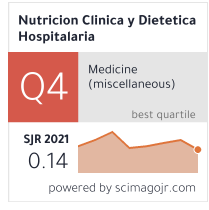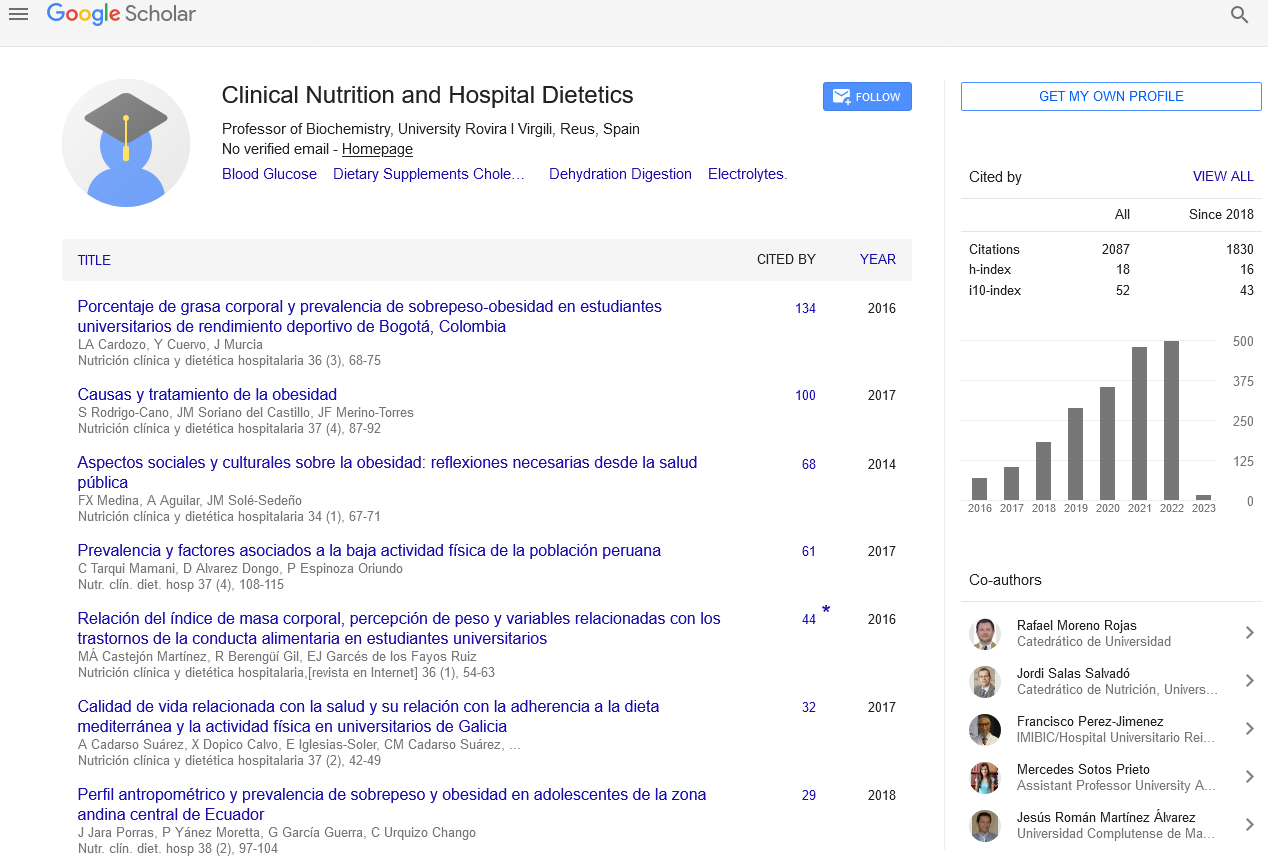Abstract
Factors associated with glomerular filtration rate in patients with type 2 diabetes mellitus treated in university hospital, northeastern Brazil
Author(s): Guedes Dantas Lira, Danielle├é┬╣; Maio, Regiane├é┬▓; Pessoa de Ara├â┬║jo Burgos, Maria Goretti├é┬▓; Chaves de Lemos, Maria Concei├â┬ž├â┬úo├é┬▓; Cezar Compagnon, Milton2; Pereira da Silva, Renata2
Introduction: Renal function can be evaluated by glomerular filtration rate (GFR), and is simple and inexpensive measurement, useful for the diagnosis of chronic renal disease in clinical practice.
Objective: To evaluate the GFR and its association with demographic, clinical, nutritional, laboratory and lifestyle in patients with type 2 diabetes mellitus followed in outpatient clinic of a university hospital in Pernambuco, northeastern Brazil.
Methodology: Quantitative study, descriptive, retrospective and documentary. Data were collected from medical records of patients who were treated at the Clinic Nutrition and Diabetes Hospital of the Federal University of Pernambuco, between January 2012 and December 2013. The sample consisted of 146 type 2 diabetic patients, adults of both sexes, with no previous diagnosis of CKD or on dialysis. GFR was measured by creatinine clearance (CrCl ml/min) using the formula of Chronic Kidney Disease Epidemiology Collaboration (CKD–EPI). According to the CrCl individuals were classified in stages of CKD, and was considered deficit of renal function GFR less than 60 ml/min. Variables related to GFR were: body mass index (BMI), gender, age, diabetes time, presence of hypertension (hypertension), smoking, alcohol, fasting glucose, glycated hemoglobin, total cholesterol and fractions, triglycerides and serum creatinine. BMI was used to assess overweight and obesity
Results: There was statistical difference between the values of GFR for the variables age and physical activity, and correlation analysis, GFR was inversely associated with the variables age (r =-0.445; p<0,01), serum creatinine (r =-0.79; p<0,01), and BMI (r =-0.197; p<0,05). The deficit of renal function occurred in 7% of diabetics. By CKD stage classification, most were in stage 2. Hypertension and dyslipidemia were common, 78.8%, 59.6% respectively. As to BMI, most adults were overweight/obesity (83.8%), similarly predominated overweight among the elderly (76.4%). The average values of fasting glucose and glycated hemoglobin were 167.8 (± 74.4) and 7.6 (± 1.9) respectively.
Conclusions: There were high frequencies of hypertension, dyslipidemia and obesity. The GFR was lower in the elderly, and in the presence of a sedentary lifestyle. In addition, three variables were inversely correlated with GFR age, serum creatinine and BMI. This is relevant when considering the importance of these factors in the progression of CKD and increased cardiovascular risk. It is emphasized that blood glucose levels were not within the target for most diabetics.
Google Scholar citation report
Citations : 2439
Clinical Nutrition and Hospital Dietetics received 2439 citations as per google scholar report
Indexed In
- Google Scholar
- Open J Gate
- Genamics JournalSeek
- Academic Keys
- JournalTOCs
- ResearchBible
- SCOPUS
- Ulrich's Periodicals Directory
- Access to Global Online Research in Agriculture (AGORA)
- Electronic Journals Library
- RefSeek
- Hamdard University
- EBSCO A-Z
- OCLC- WorldCat
- SWB online catalog
- Virtual Library of Biology (vifabio)
- Publons
- MIAR
- Geneva Foundation for Medical Education and Research
- Euro Pub
- Web of Science
Journal Highlights
- Blood Glucose
- Dietary Supplements
- Cholesterol, Dehydration
- Digestion
- Electrolytes
- Clinical Nutrition Studies
- energy balance
- Diet quality
- Clinical Nutrition and Hospital Dietetics




